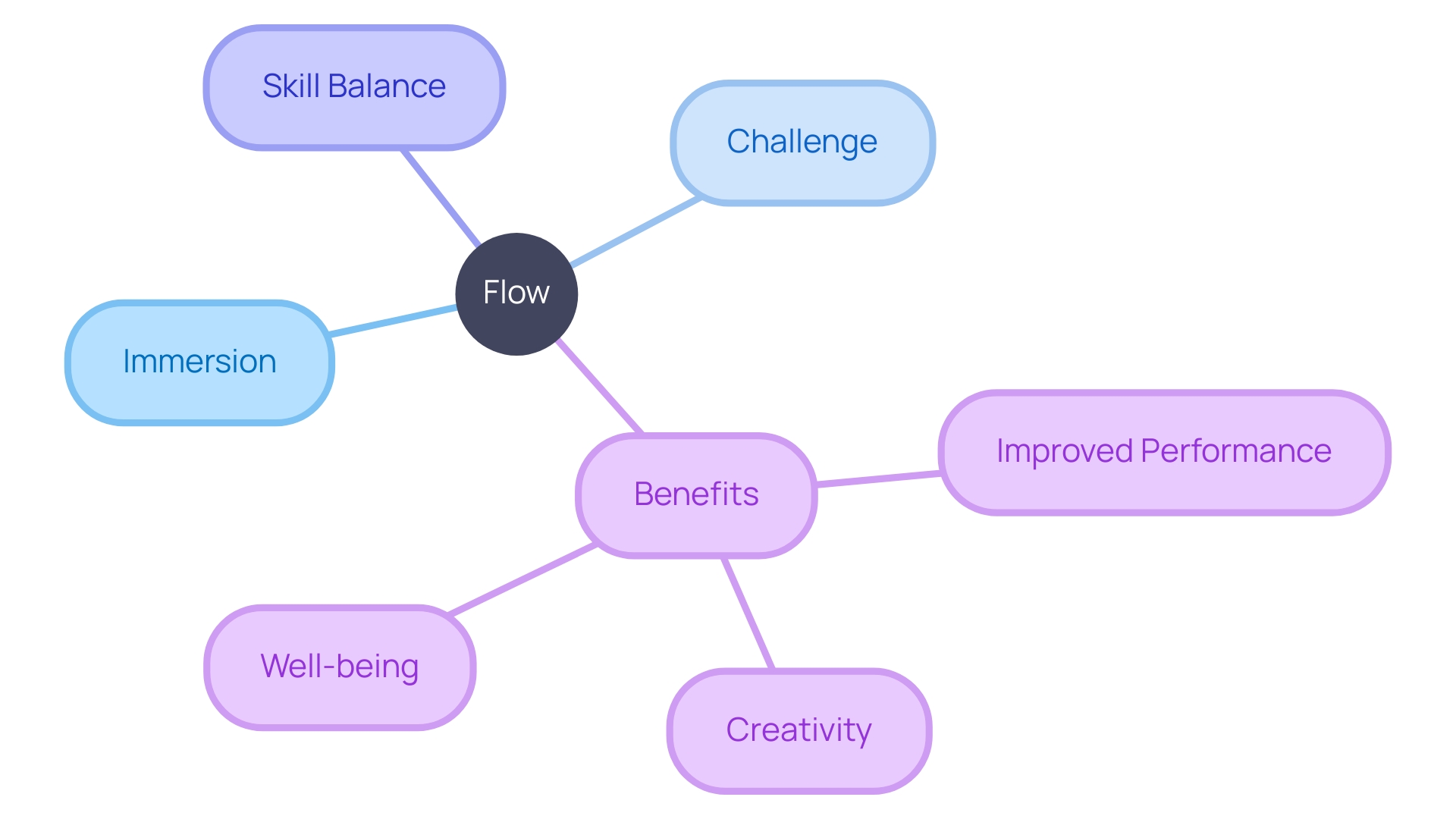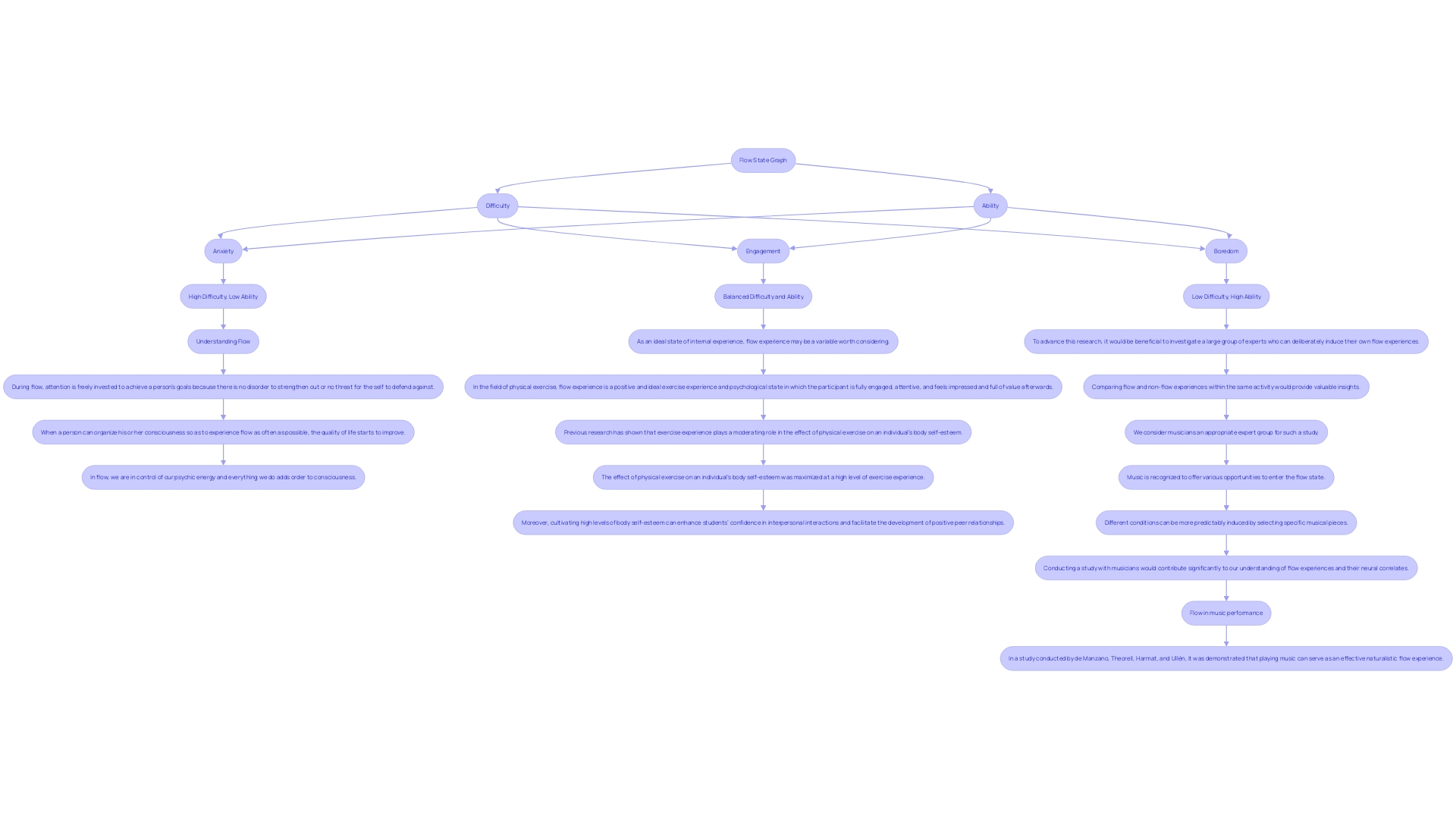Understanding Flow State Graphs: Visualizing Optimal Performance

Introduction
Imagine being so immersed in a task that time dissolves, distractions vanish, and effort feels effortless. This is the flow state, a term coined by psychologist Mihaly Csikszentmihalyi to describe the optimal state of performance and fulfillment. In this state, skills and challenges align perfectly, creating an experience where productivity, enjoyment, and focus blend seamlessly.
The science of flow is more than theory. From the worlds of gaming and athletics to the achievements of icons like Michael Jordan and Steve Jobs, flow has been linked to creativity, innovation, and record-breaking performance. Research also suggests benefits for mental health, cardiovascular function, and overall well-being.
Understanding and applying the principles of flow—especially through the Flow State Graph—can help individuals, teams, and organizations unlock untapped potential. By mastering this state, you can foster continuous growth, achieve peak performance, and experience deeper satisfaction in work and life.
Characteristics of Flow State
Flow is an immersive psychological condition where challenge meets skill, creating intense focus and intrinsic motivation. In flow:
-
Time feels distorted—minutes become hours.
-
Distractions fade, allowing uninterrupted concentration.
-
Performance improves, as actions feel automatic and effortless.
-
Enjoyment increases, making even demanding work feel rewarding.
Gaming illustrates this vividly. Titles like Mario Kart 8 Deluxe use adaptive difficulty and instant feedback to sustain engagement. Similarly, elite performers like Michael Jordan credit their legendary performances to being “in the zone.” Steve Jobs described moments of creative immersion where time seemed irrelevant.
While most studies are based on self-reported data and small samples, findings consistently suggest flow improves learning, creativity, and well-being. It’s not only about productivity—it’s about reaching a state of fulfillment.

The Flow State Graph: Understanding the Experience Model
The Flow State Graph (or Experience Fluctuation Model) is a powerful visualization of how skills and challenges interact.
-
High challenge + low skill → Anxiety
-
Low challenge + high skill → Boredom
-
Balanced challenge + skill → Flow
This model explains why flow emerges when difficulty and ability are in harmony. Too much pressure leads to stress; too little leads to disengagement.
Global research backs this up. Over 2,600+ peer-reviewed studies across psychology, sports science, education, and computer science highlight how flow states enhance productivity, creativity, and overall wellness. From athletes to artists to software engineers, the Flow State Graph provides a universal framework for peak performance.
Key Components of the Flow State Graph
The Flow State Graph highlights three primary zones:
-
Anxiety Zone: Challenge exceeds skill → frustration, stress, and potential burnout.
-
Boredom Zone: Skills exceed challenge → disengagement and lack of motivation.
-
Flow Zone: Skill and challenge align → effortless focus, creativity, and progress.
Real-world applications are abundant. In gaming, dynamic difficulty adjustment keeps players engaged. In education, tailored learning paths help students stay challenged without being overwhelmed. In sports, coaches design drills that push athletes just beyond comfort zones, keeping them focused and motivated.
Csikszentmihalyi observed: “Flow is the state in which people are so involved in an activity that nothing else seems to matter.” This illustrates the immersive and rewarding nature of optimal engagement.

Balancing Challenge and Skills: The Core of Flow State
The essence of flow is the balance between skill and challenge.
-
Too difficult: Anxiety undermines focus.
-
Too easy: Boredom erodes engagement.
-
Balanced: Energy flows naturally toward progress.
As Csikszentmihalyi wrote: “The best moments in our lives usually occur when a person’s body or mind is stretched to its limits in a voluntary effort to accomplish something difficult and worthwhile.”
This principle applies universally—whether you’re coding, painting, training for sports, or leading a project. Maintaining the right level of stretch is what keeps you in the flow zone.
Practical Applications of Flow State in Different Fields
Flow is not confined to psychology—it’s a tool for sports, business, education, and the arts.
-
Sports: Athletes like Michael Jordan credit flow for peak performance under pressure.
-
Creative arts: Research by John Kounios and David Rosen shows that letting go after mastering skills sparks creative breakthroughs.
-
Business: Companies like Google foster flow by encouraging side projects and recharging time, boosting innovation and employee satisfaction.
-
Education: Adaptive teaching helps students stay in flow, improving learning outcomes and motivation.
By cultivating flow, organizations can boost innovation, productivity, and engagement. For individuals, it’s a pathway to fulfillment and resilience.
How to Achieve Flow State: Tips and Strategies
Reaching flow requires intentional design of your environment and habits. Key strategies include:
-
Set clear goals: Know what success looks like before you start.
-
Match task to skill: Choose challenges that stretch but don’t overwhelm you.
-
Eliminate distractions: Use deep work practices, block time, and silence notifications.
-
Leverage MIT (Most Important Task): Start your day with the single most impactful activity.
-
Practice letting go: As Drexel University research shows, flow emerges when brain circuits work autonomously after expertise is built.
As Bernard Coleman of Swing Education notes, watching Michael Jordan or Miles Davis in flow demonstrates what it means to be fully immersed in mastery.
Visualizing Flow State: Tools and Techniques
Visualization and tracking tools can help sustain flow:
-
Journals: Reflect daily on when you experienced deep focus.
-
Visualization methods: Picture yourself performing tasks seamlessly.
-
Productivity apps: Tools with timers, focus modes, or progress dashboards reinforce structure.
Research spanning 84 countries and 2,600+ studies confirms global fascination with flow. Tools that track patterns help individuals identify what conditions lead to flow and replicate them.
Mastering flow is a journey of self-discovery. Each experiment with tools and strategies brings you closer to consistently accessing this optimal mental state.
Conclusion
The flow state represents a powerful intersection of challenge and skill, where productivity, creativity, and fulfillment converge. By immersing in tasks with clarity and focus, you can experience moments where time bends and achievement feels effortless. Legends from sports, business, and the arts prove its transformative power.
The Flow State Graph helps visualize why balance matters—too much challenge creates anxiety, too little invites boredom, but the sweet spot produces peak performance. By designing environments that encourage flow—through clear goals, minimized distractions, and self-reflection—individuals and organizations can unlock extraordinary outcomes.
Flow is not a one-time experience but a lifelong practice. Every step toward mastering it enhances personal satisfaction, sparks innovation, and drives collective success. In work, learning, or play, embracing flow creates a ripple effect of growth and excellence.
